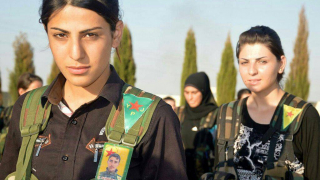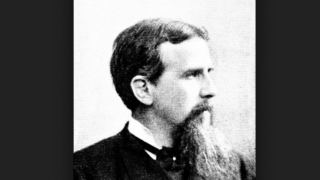A ‘Dialogue of Civilizations’ as a Theoretical Model for a Multipolar World Order
29.01.2013
In a rare unanimous vote, the United Nations General Assembly adopted a proposal by the scholar and then-President of the Islamic Republic of Iran, Mohammed Khatami, to designate 2001 as the ‘Year of the Dialogue among Civilizations’. This normative vision sought to lay out a new ethical paradigm of international relations and the formulation of a truly multicultural international society based on the simple premise of ‘unity in diversity’, a political acceptance and manifestation of the world’s inherent cultural pluralism seated in the aspiration of cross-cultural respect and understanding. The ‘Dialogue of Civilizations’ (DAC) calls for the ‘re-opening and rediscussion of the core Western-centric and liberal global order’ and in so doing, ‘represents a powerful normative challenge to the contemporary political orthodoxy implicit in all the major political discourses of the future world order’ (Petito 2009, 12). Sadly, and in hindsight, tragically, these proposals were not to be acted on or developed, either theoretically or in policy, as events outpaced the political process.
How ironic is it then, that during the ‘International Year of Dialogue among Civilizations’, that after the events of 9/11, 2001 would instead become known for a ‘clash of civilizations’, a watershed point marking the beginning of the US and larger West’s ‘War on Terror’, or ‘Long War’,in what should properly be seen as a hegemonic struggle to force ‘black holes’, ‘rogue states’, and organizationswithin the Islamic world to submit to the liberal and cosmopolitan Western political and economic world order. International terrorism, thus, is apredictable blowback, symptomatic of the increased salience of cultural identity, against and in response to a socially intrusive and aggressive neoliberal capitalist-driven globalization and modernization. This was widely seen as a repudiation of Francis Fukuyama’s historically deterministic, and triumphalist liberal democratic/capitalistEnd of Historywith its destructive imposition of false universality and homogeneity, and a vindication of Samuel Huntington’sculture-based Clash of Civilizations (CoC) thesis,for the theoretical paradigm of understanding international relations in the post-Cold War era.
Even Huntington, however, argued that the only way to avoid or mitigate thisCoC is the construction a multipolar and multicivilizational order, engaged in a process of multicultural and intercivilizational discourse. Civilizations are organized around what he identifies as ‘core states’ which are the civilization’s ‘sources of order’, as member states regard it as ‘cultural kin’. He continued, ‘A world in which core states play a leading or dominating role is a sphere-influenced world.’ These core states act as the primary actors of, and the negotiators between civilizations, creating the world political system (Huntington 1996, 156). Structural realists would term these core states, Great Powers, and identify this sphere influenced world as multipolar. A ‘DAC’ differs from the CoC paradigm in that the former seeks normatively to prevent or mitigate the latter.
Civilizational discourse is increasingly useful as an analytical tool for international relations scholars and foreign policy-makers,with the decrease in the primacy of political-economic ideology for the identity formation of individuals, states, and geopolitical blocs or alliances following the end of the bipolar Cold War era, and the commensurate resurgence in the importance of culture in both the formation of identity and the increase in the occurrence of conflict and tensions based on ethnic, tribal, and religious identity and divides. While recognising the importance of Huntington or his contemporary Alexander Panarin, as well as earlier theorists such as Braudel, Spengler, and Toynbee, for laying the foundations; civilizational discourse evolvedbeyond a Herderian and completely primordialist and essentialist definition of civilizations as unitary and unchanging actors, predetermined to define their relations as primarily one of conflict.
We can therefore define a civilizationas “the highest cultural grouping of people and the broadest level of cultural identity” characterized by “common language, history, religion, customs, institutions, and by the subjective self-identification of people (Huntington 1996, 43). They are “the broadest, most capacious envelope of cultural traits related – directly or indirectly, explicitly or implicitly, to geographic location and temporal shifts. Civilization equals culture writ large over space and time. Space predominates. Time becomes crucial in trying to chart changes in modes of production and patterns of influence that characterize civilization from pre-modern to modern phases of history (Lawrence 2010, 157). Civilizations are both plural and internally pluralistic, come into being and go extinct. As social constructions of partial primordiality, they can become politically reified, particularly when they interact with other civilizations (Katzenstein, 2010, 6-7). They clash, compete, cooperate, cross-pollinate, evolve, and hybridize in their relations with other civilizations. Conflict often occurs within civilizations even more than it does between civilizational cores states, or along civilizational fault lines.Civilizations are loose and internally differentiated, rather than coherent, homogenous, and unified, intersubjective cultural complexes that lack well-defined limits or borders and often overlap one another. As cultural entities, they are not political actors on their own right, but themselves contain states and other social units and individuals that act in their stead. In their turn, civilizations are no longer seen as existing within a system defined by anarchy, but rather within a broader geographic and historical global ecumene with multiple possible modernities, a world polity, or possibly as Eisenstadt proposes, within a larger single civilization of modernity, a technological and secular social order created by the international state system, international organizations, and global trade (Eisenstadt, 2001).
It is commonly accepted in both international relations academia and foreign policy circles that Krauthammer’s ‘Unipolar Moment’ is over and that American and Western civilizations global hegemony is deteriorating. This can be seen in two primary ways. First, is the drain of societal resources, as well as of their moral and political authority from their military and memetic conflicts throughout the Islamic world that seem without limit of scale or resolution. Second is in the Global recession of 2008, continuing in the West, which has exacerbated and accelerated the trend of the shifting of the globe’s economic centre of gravity from West to East. This has demonstrated the bankruptcy of the West in terms of the ability of their neoliberal political-economic ideology to construct a just and stable world order, the global system of virtual and parasitic finance they have created, and in terms of their state and societal debts and deficits. A new multipolar world is seen as dawning, whose primary Great Power and regional poles have rough potential spheres of influence that correspond well with the various civilizations and cores states theorized in the civilizational discourse of international relations; that is, Russia, China, the EU, the United States, a Bolivarian Latin America, India, the Islamic world and possibly, sub-Saharan Africa.
The conceptualization of a ‘Dialogue of Civilizations’ has re-emerged as an alternate better way of theorizing a more just and diverse multipolar world order, securing global peace and security, and managing the inevitable tensions and conflicts between the Great Powers, or civilizational core states, than realist ‘Concert of Power’ balancing. Thus a DAC is normative and idealistic without being utopian, as it does not depend on absolute faith in progress, false universality, or a belief in human perfectibility typical of liberal cosmopolitanism.A model of an alternate world order inspired by a DAC is bound in three dimensions (Petito, 2009, 52). First, it has multipolarity as its spatial orientation, in effect a neo-regionalist revival of Carl Schmitt’s idea of ‘Grossraum’ (greater space)’, or macro-regions balancing power along civilizational lines, together with ‘multilateral negotiation between states as a normative source and a democratic legitimization of the processes of regional integration’ (Mouffe, 2007 and Zolo, 2007, 7). This balance of power with its temptation ‘to clash’ would be tempered with a greater emphasis on the second normative dimension of a DAC, a new textured cross-cultural jus gentium (law of peoples) (Petito, 2009, 56) that reinforces the UN Charter’s principles of the sovereignty of states and non-interference in domestic affairs, while rejecting interference via the revisionist Western conception of a Right To Protect (R2P),the Western conceptions ofso-called ‘universal’ human rights, and the legal positivism characteristic of international law; in favour of a cross-cultural dialogue about morality ,the recognition of cultural differences, and the social ethics of ‘really existing communities’ (Dallmyr, 2004, 47).The third dimension of a DAC is a serious commitment to peace through active multicultural and multicivilizational dialogue and discourse at multiple levels and in multiple spheres.Thus a DAC aims not to construct walls or fences of containment and separation between civilizations, but rather building bridges of mutual understanding. ‘An active politics of a dialogue of civilizations represents the combination mechanism of connection between multipolarity and the new cross cultural jus gentium, both as a way to reduce the risk of cultural enclosure in the former and to dialogically inscribe plurality in the latter’ (Petito, 2009, 6).
In comparison to the failure of an unappealing unipolar and universalizing liberal Western hegemony with globalization driven by neoliberal economic reductionism and exploitation on one hand, and the likely geopolitical clashes of an emerging multipolar world based on a thin ‘Concert of Powers’ balancing, a genuine DAC provides a greater possibility of dealing with the truly global issues of resource depletion, environmental deterioration, and climate change. The BRICS (Brazil, Russia, India, China, and South Africa) and the Shanghai Cooperation Organization (SCO) already have the structure, membership, and expressed principles that make them a good institutionalized example of such a multicultural and multicivilizational dialogue and cooperation in practice. Eurasianism is an example of an ideology and international social movement that embraces these principles. Such multiculturally constituted processes and structures of regional integration and civilizational cooperation are more conducive to a peaceful global order as they act as a preventative antidote to the possible negative politicization of cultural differences on a global scale, providing legitimate channels for the expression of dissent, preventing antagonisms from taking the extreme forms of dissent we identify as culturally fundamentalist terrorism today. Thus the discourse of a DAC has not emerged out of a political or theoretical vacuum but in response to the global issues and crises faced today, in particular a looming crisis of order combined with a growing worldwide political manifestation of cultural pluralism and differences (Petito, 2009, 53, 60). The DAC is a possible answer to this, an international political theory for the normative structure of a multicultural and multipolar international society.
Works Cited:
Dallamyr, Fred (2004). Peace Talks – Who Will Listen? Notre Dame, IN, USA: Notre Dame University Press.
Eisenstadt, S.N. (2001). “The Civilizational Dimension of Modernity: Modernity as a Distinct Civilization,” International Sociology, 16(3): 320-340.
Fukuyama, Francis (1992). The End of History and the Last Man. New York: Free Press
Huntington, Samuel (1996). The Clash of Civilizations and the Remaking of World Order.London, UK: Simon and Schuster.
Katzenstein, Peter J. (2010). Civilizations in World Politics: Plural and Pluralist Perspectives. London, UK: Routledge.
Krauthammer, Charles (1991). “The Unipolar Moment,” Foreign Affairs, no 1:23-53.
Lawrence, Bruce B. (2010). “Islam in Africo-Eurasia: A bridge civilization,” in Katzenstein, Peter J. Civilizations in World Politics: Plural and Pluralist Perspectives. London, UK: Routledge, 157.
Mouffe, Chantal (2007). “Carl Schmitt’s Warnings on the Dangers of a Multipolar World,” in Odysseus and Petito (eds.) The International Political Thought of Carl Schmitt,147-153.
Petito, Fabio (2009). Civilizational Dialogue and World Order: The Other Politics of Cultures, Religions and Civilizations in International Relations , New York: Palgrave, co-edited with Michalis S. Michael.
Zolo, Danilo (2007). “The Contemporary Use of the Notion of Empire,” in Odysseus and Petito (eds.) The International Political Thought of Carl Schmitt, 154-165.














